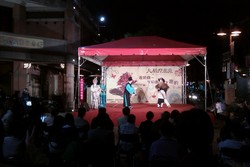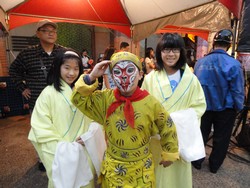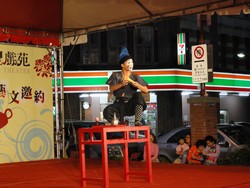
Opera activity has close relation to the public daily life.
In Chinese ancient entertainment activities, operas are closely related to people’s life.Festivals of four seasons for peasants, recreation and liaison gathering for businessmen, and feast and congratulations for officials, opera performance was the best choice for excitement assistance.Up from the nobles down to the civil ordinary people, there were few people that disliked watching operas.It has the multi social functions of religion, entertainment, education, social gathering, economics, psychological and cultural side.In addition, through watching operas and having entertainment, audience also was passed with the moral concepts, ethnic consciousness, and historic story from the operas.Eventually, the opera reached its transformation function.
A. Religious Function: the Main Purpose of Opera Performance was grateful to God
Due to the frequent ceremonies, such as birthdays of Gods, festivals of the temples, seasonal holidays, feedback of people’s wishes, worship to the ancestry ceremonies, and birthday celebrations and funeral memorials, all would have traditional operas to perform.Religious belief becomes the biggest power to comfort the public soul; and the performance of the traditional opera becomes a necessity to folklore religion.
B. Entertainment Function: A General Leisure Recreation
In the traditional society, mass media were not developed.Folklore opera activity became the most general common entertainment.There were not only various opera groups to conduct occupational performance, various part-time brotherhood clubs were popular as well.
C. Educational Function: Faithfulness, Piety, Righteousness, and Recreational

In the operas, there are various tales and characters.
There are all sorts of topics and plot contents for the traditional operas; for instance, legendary tales such as talented man and beautiful ladies, fairy and ghosts; and deeds of the heroes and generals, faithful ambassadors and piteous sons.Due to the performance type of traditional opera is lively and vivid, full of recreational, it was to the early day publics that were lack of education opportunities might develop education function as transforming and teaching faithfulness to the nation and piety to parents.
D. Liaison Function: Social Gathering, Looking for Marriage Subject
Normally, people were busy at work, when there was opera performance, people would gather together to watch opera.The purpose might not be watching opera itself, but rather chatting with family relatives and social gathering with businessmen in order to achieve liaison function.On the other hand, folklore opera activity also a good timing for social gathering; young men and women may be acquainted with their fond subject by way of watching opera.
E. Economic Function: Gathering Audience, Forming Marketplace
As long as there were opera activity, various irregular vendors would coming up, doing business under the stage booth or in front of the temple plaza.Using the opportunities of worship ceremony and foot traffic gathering, vendors conducted transactions; and the nearby shops would increase profit via the crowds that stimulated consumption.
F. Psychological Function: Relieving Pressure, and Pursuing Roundedness

Opera has the recreational function.
People through appreciating opera, their feelings also up and down along the experiences of the characters.In the meantime, people relieved their inner compression and their emotions be satisfied.“Life is like opera, and opera is like life,” the topics of opera normally adopted from the rich and changeable real life.The emotions of likeness, anger, sadness, and happiness of characters are all reflections of the realistic life.Therefore, by way of watching the performance of opera, people may compensate the flaws of real life, and to acquire psychological compensation.
Reference: Heritage of Art Bi-monthly, No. 78, National Traditional Art Center.Sorted by the research team
Source of Photos: photography by the research team
